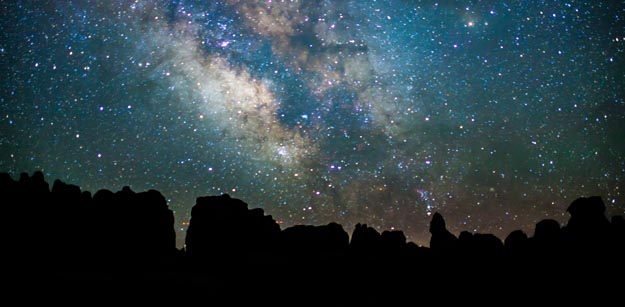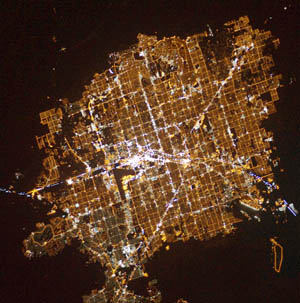
Help Keep Our Skies Dark — Join IDA Today
It's high time that we amateur astronomers got serious about protecting the night sky from light pollution.

The night sky above the peaks of Canyonlands National Park is dramatically dark — as demonstrated by this view of the summertime Milky Way.
NPS / Emily Ogden
NPS / Emily Ogden
Ten years ago I took a three-week canoe trip down the Green River in Utah, right through the heart of Canyonlands National Park. During the day, stunning canyon scenery all around me. At night, unbelievably dark skies overhead.
As I paddled down that winding river, with sheer cliffs of Jurassic sandstone and other colorful sedimentary rock rising on either side, I couldn’t help thanking those early conservationists who’d had the foresight to protect unique wilderness lands like Canyonlands. If they hadn’t safeguarded it, who knows what would have become of that gorgeous red-rock landscape?
In the same way, I was delighted when I learned last year that Canyonlands had become an International Dark-Sky Park. It was one of 17 Dark Sky Places established in 2015 alone by the International Dark-Sky Association. The IDA has helped establish five dozen such locales around the world – a spectacular achievement – and more are in the pipeline for certification.

It's no surprise, but Las Vegas is alarmingly bright as seen from orbit at night. This International Space Station image was taken November 30, 2010.
Again, I can’t help but think, if not for the visionaries at IDA, who will champion and preserve our dark skies? One look at a typical NASA satellite image of the U.S. at night (or any other highly populated part of our planet) shows that the IDA isn’t kidding when it declares on its website, “Millions of children will never see the Milky Way.”
Do we really want to let that happen? If you’re not already a member, I urge you to join the IDA (it’s only $35) and help lead the fight against light pollution. The only way to conserve dark sites is through proper lighting policies and public education – the kind of work the IDA does every day.
And keeping dark sites dark will not just help amateur astronomers, it will help wildlife. Did you know that the IDA is deeply involved, for example, in sea turtle conservation?
Sky & Telescope, by the way, has supported the IDA since its inception in 1988, and we regularly run articles on the subject of light pollution. These include “Surveying Skyglow," our cover story in May 2015, which details how night-sky measurements by amateur astronomers are needed to help researchers track light pollution's many deleterious effects.
As a gauge of the concern we all should share about this problem, I encourage you to read the letter below co-signed by Dave Eicher, editor of Astronomy magazine; John Goss, president of the Astronomical League (AL); and yours truly. It just appeared in the March 2016 issue of The Reflector, the League’s journal. The letter explains how greatly your participation is needed to help ensure that dark skies everywhere — like those seen in Canyonlands National Park or from our own backyards — remain that way for us, our children, and generations to come.


No comments:
Post a Comment